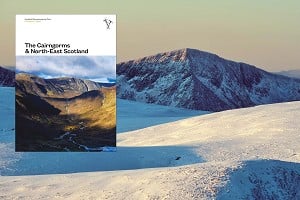
"I always suspected that there were lots more 'bijou' crags scattered around and wondered where they are," writes Mick. Over The Moors, 'the definitive climber's guide to moorland gritstone', offers 624 pages of full colour moorland joy plus 90 action shots, so no more need you cry “F*ck this! I'm off to Stanage" (or for a curry in Bradford...)
The book was edited by Martin Kocsis with Ian Carr. The Series Editor is Niall Grimes.
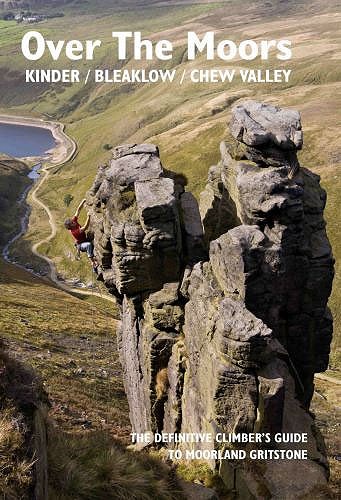
For me, the love affair began early, in a somewhat secretive library in Ireland, in the late 1960s. There was an old guidebook, maybe the 1957 Climbs on Gritstone Volume 4 by Eric Byne and Wilf White. Climbing on grit? What was that all about? How different to Irish mountain crags! One photograph in particular entranced me. I think it was entitled 'A wet, misty day at the Ravenstones', a suspiciously large group of people happily belaying in the wet. Perhaps the first intimation that Dark Peak pleasures would be well earned.
In the 1970s, up-to-date information was hard to find. The late Dave Cook had written in Mountain that Tintwistle Knarr was the best crag on grit. Lured by this blithe encomium, John Bogg and I wandered all over Crowden Great Quarry, increasingly frantically searching for 'the best crag on grit'. Of course we never found it. The proceedings were abruptly terminated by my terse announcement to Boggie, “F*ck this! I'm off for a curry in Bradford.” Running down the hillside and jumping into our battered minivan, we shot round a few corners and were confronted by Tintwistle glinting mockingly on the hillside above.
Up-to-date information remained hard to find... A few years later, at Shining Clough, on a dire autumn morning, with a pounding hangover, I stood nervously at the bottom of East Rib. Back then, you had to practically beg a local for a glimpse of the Bleaklow guidebook. And what I was briefly shown didn't make for fun reading: XS, 5c, serious. Teetering upwards, in a gentle drizzle, I encountered what seemed a VS path. Sometimes the gods smile. Today East Rib gets HVS 5a, which is probably about right. It's one of the very best routes on grit, a juggy, well-protected romp of an arête that soars upwards like the prow of a battleship.
"In 1988, Moorland Grit finally laid bare the hitherto jealously guarded mysteries of the Chew and its environs."
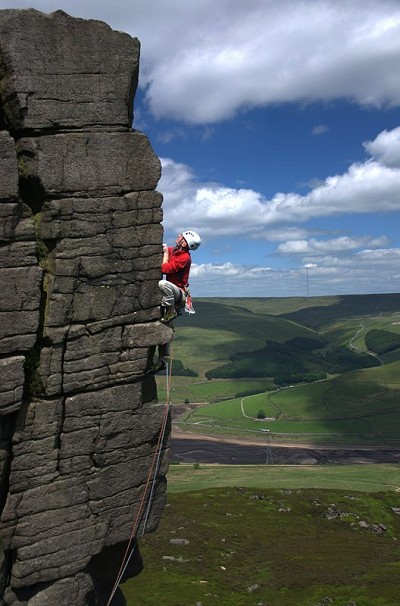
In 1988, with help from Ian Carr and others, Chris Hardy, Carl Dawson and Geoff Milburn produced Moorland Grit, finally laying bare the hitherto jealously guarded mysteries of the Chew and its environs. Dougie Hall graced the front cover, styling his way up the aptly named Appointment with Fear. Moorland Grit was a true labour of love, meticulously researched and beautifully presented. At the time, I thought, 'Guidebooks don't come any better than this.'
Yet time marches on: nearly a quarter of a century, in this case. Technology improves. The database of photographs expands. An expanded team approach can give hundreds (and maybe thousands) more hours of dedicated checking in remote areas. Now we have Over the Moors, the lovechild of Moorland Grit, richly imbued with the passion of its parent.
For me, the first question to ask of any guidebook is this: does the front cover entice me to climb in the area? Over the Moors has Mike Hutton's superb photo of Paul Fleuriot running it out on the rounded, overhanging Trinnacle West. There's something weird, other-worldly about the knobbly, bulbous Trinnacle. To paraphrase Dorothy in The Wizard of Oz, “Toto, we're not on Stanage any more!”
Over the Moors covers Kinder and Bleaklow, along with the Chew and Marsden areas. Activity began with J W Puttrell's first tentative routes on Kinder in 1890. Back then, visitors tempted fate; the place was vigorously guarded by vicious gamekeepers. Of course any self-respecting climber does tempt fate; this is, after all, what the game is about. So Puttrell and his companions returned. In 1910 Siegfried Herford climbed his eponymous route on The Pagoda. A then cutting edge HVS, it still merits respect over 100 years later. Subsequently attention shifted to Laddow and the famous rivalry between H M Kelly and Ivar Berg. In 1916, the latter's inspired solo of Cave Arête Indirect brought E1 into being. The game was on – with a vengeance.
"The amazing thing is that virtually all of these Dark Peak crags have remained backwaters since the 1920s. Why is this? Are we so lazy that we won't walk uphill?"
And yet the amazing thing is that virtually all of these Dark Peak crags have remained backwaters since the 1920s. Why is this? Are we so lazy that we won't walk uphill? Are we so wedded to the delights of queuing for routes at Stanage that we won't contemplate slightly more distant horizons? I remember Steve Bancroft casually remarking, “Every time I go up on to Kinder, I do a new route.” For many years, the pickings were laughably easy.
What of the other crags? Shining Clough can give a great day at mostly well protected Severe, VS or HVS/E1. Phoenix, Pisa Superdirect, East Rib and Galileo are all superb. At E2 and E3 respectively, Yerth and The Big Wall are worthwhile. Saucius Digitalis, at E5, and Bloodrush, at E6, both look stunning. Wimberry (known locally as Indian's Head) was once wryly described by Joe Brown as 'The best crag in Yorkshire'. (They may have moved the county boundaries a few times since.)
Again you can have a superb day at well protected VS/HVS, grunting up fantastic cracks, such as The Trident. At E2, Halina (the make of first ascentionist Barry Rawlinson's prized camera) is very good, as is Charm, at E3. And obviously there's harder fare, particularly out on the blunt arêtes. But beware. Dave Simmonite's depiction of Dave Pegg 'sport climbing without bolts' on the first ascent of MaDMAn, shows what E8 in these parts can require. In the opinion of Over The Moors, 'Perhaps the finest photograph of hard grit commitment ever taken?'

But what if you really can't face the walk up to Kinder, Laddow, Shining Clough or Wimberry? Well the path up to The Ravenstones from Greenfield Reservoir doesn't look too bad; not that I've ever done it, plumping instead for the trek across the valley from Standing Stones, which, as Thomas Hobbes said about life, is nasty, brutish but mercifully short. Once arrived though, the place is majestic, with an abundance of stunning lines of all grades. Be aware: the top of Welcome to Greenfield, Gateway to The Valley is bloody hard for E3, particularly for the short. Much more amenable at the same grade is True Grit. As Over The Moors promises, 'Never has a route been so aptly named. Fabulous in every way.'
And what of Tintwistle Knarr? Was Dave Cook having a laugh or had he been bewitched by the place? For many years, it was shrouded in mystery. Rumours abounded of access problems and of hard routes with few ascents. Now all is made clear. Pete Crew's The Arête takes a similar battleship prow to Shining Clough's East Rib although, at E2, it's a little harder. But there are lots of easier corners and grooves which probably just need regular traffic to stay clean. The late Barry Kershaw's 1958 testpiece, Kershaw's Crackers, leers at you tauntingly. We are warned, 'Pain beyond reason...' and it's a warning I'd take seriously. Kershaw had a formidable reputation. Wasn't there a fabled duel between him and Patsy Walsh, each squeezing the other's testicles? For the life of me, I can't remember who was reputed to have given in first.
"I always suspected that there were lots more 'bijou' crags scattered around and wondered where they are. Wonder no more. Secrets are willingly divulged."
But not all of us want pain, whether it's of the squeezed testicles or the strenuously uphill variety. These days, lots of people want roadside crags - and why not? Lots of people want friendly trad venues - and why not? For years, Hobson Moor, the ultimate roadside crag (and Dougie Hall's former training venue), helped to keep me sane when commuting around Manchester. Swift solos of Tighe's Arête, at E1, Crew's Route, at VS, and the exquisite Parker's Eliminate, at HVS, never failed to please. And there's loads of other stuff at Hobby, particularly the famously pumpy back wall traverse, where you're never more than a few feet off the ground. I always suspected that there were lots more 'bijou' crags scattered around and wondered where they are. Wonder no more. The secrets of Broadbottom, Blackshaw and other roadside venues are willingly divulged. At New Mills Torrs, you can even clip bolts on gritstone.
What of the eternally vexed subject of grades? It's probably fair to say that, if you want soft touches, you may well do better going elsewhere. But, for what it's worth, at Running Hill Pits, I don't remember Plumbline as being any harder than VS or Mangled Digit as any harder than 6a (the grades given in Over The Moors).
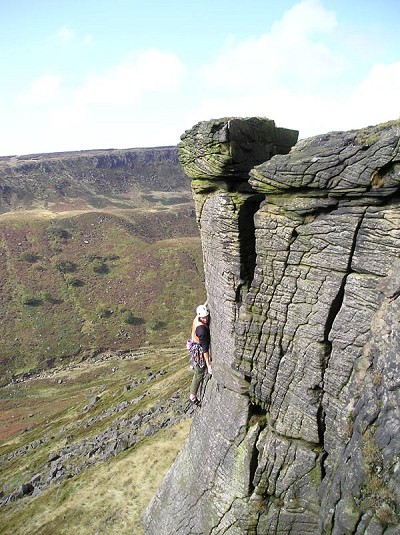
At Tintwistle, the rudely named Nosey Parker goes up from its original E3 to a no doubt richly deserved E5. At Hobson Moor, Drizzle was first described as HVS, before leaping to heady E4; it's present grade of E3 seems about right. At Bareholme, the exquisite delicacy of Shy Ann Arête sensibly goes up from HVS to E1. At Noe Stool, the mythical 1903 V Diff, Noe Picnic, swaggers in at E5 6c. As the guidebook archly notes, 'This is perhaps the most remarkable upgrading ever to have taken place on British rock'. At Running Hill Pits, Scoop de Grace stays at E5 7a – despite being listed as highball V10. (At least it's at the top of the E5 category in the graded list.) Evidently climbing harder than E5 on these crags takes considerable amounts of both ability and neck. No wonder Dave Pegg was looking a bit stressed on MaDMAn.
Well, these are my comments, as an outsider, on grades. Naturally outsiders will never know the place as well as locals. One well informed local opinion suggests that, at Running Hill Pits, Phaestus is more like E4 or E5 rather than E3 and Get Rhythm is E5, not E6. Furthermore Dougie Hall started Scoop de Grace from the block on the left; the tall person's version right of this may be 'only' 6c. At Wimberry, Space Shuffle is thought to be E4, not E5, and Blind Faith E3 or E4, rather than E2. Northern Ballet is considered to be technically 5a/b, rather than 5c. At Wilderness Rocks, 'Ard Vark is reckoned to be E2 rather than E4, while at Shooter's Nab, Cuticle Crack and Lone Tree Buttress are both regarded as more like HVS than E2. I am told that other locals have similar differences of opinion about guidebook accuracy. Obviously an online review and accompanying thread will give them ample opportunity to make their views publicly known, if they so wish.
"The mythical 1903 V Diff, Noe Picnic, swaggers in at E5 6c - 'This is perhaps the most remarkable upgrading ever to have taken place on British rock'."
What of those who have graced these outcrops with significant new routes? The roll call is long indeed and it's hard to pick a few out of so many worthy of mention. But, for better or worse, I'll try: J W Puttrell and Siegfried Herford at the turn of the 20th century; The Rock and Ice in the 1950s; the Rimmon in the 1960s, Steve Bancroft and Loz Francomb in the 1970s; Dougie Hall and Nick Plishko in the 1980s; Dave Pegg, Andy Cave and Andy Popp in the 1990s. The last few years have seen significant contributions from Tom De Gay, Nik Jennings, Miles Gibson and Sam and Pete Whittaker. Perhaps Malc Baxter, Al Parker and Kevin Thaw best epitomise the enduring lure of bold grit in these bleak but beautiful Northern heartlands. For decades Thaw has travelled thousands of miles back to where, for him, it all began, to measure himself against increasingly impressive testpieces.
Undoubtedly challenges remain. Franco Cookson's horrendous lob off O'Grady's Incurable Itch (without side runners) gives the lie to the veterans' tired canard that the youth of today lack boldness. The young and bold will always go where we never dared. That's the way it's always been and that's the way it always will be.
But many of us are not bold and some of us are not young. So what is there for us? Thousands of routes, years of fun and challenge. Over the Moors gloriously sends us on our way, with over 600 pages and tens of thousands of facts. With a task of this magnitude, there are bound to be occasional errors. I'm sure there are errors in this little review, even though I've spent more than a week on it! The day Leonardo finished the Mona Lisa, he probably thought, “Flamin' heck, kid, I'm sure you could have got those brush strokes a bit better...”
It seems to me that the standard of guidebook writing in this country has become superlative. Unlike traditional publishing, nearly every guidebook now produced is unbelievably better than nearly any guidebook was 30 or 40 years ago. For me, the very best guidebooks are not merely well presented; they are also written with unashamed love for the crags they describe. From many hundreds of guidebooks, I'd select a few as being truly great: the late Paul Williams' guides to Llanberis and Cloggy, Nick Dixon's guide to Cloggy, Moorland Grit, by Chris Hardy, Carl Dawson and Geoff Milburn. With Over the Moors, Martin Kocsis, Ian Carr and Niall Grimes have delivered a guidebook of wondrous beauty.
Will it be the last guidebook to this area? No Martin, I don't think it will. Eternity may be a very long time indeed. The great climbers of tomorrow will be better than us; and the great guidebook writers of tomorrow will probably also be better than us. No matter. We do what we can. And what you have done is exceptional.
Summary
Gentle reader, I'll leave you with a last few thoughts. Tantalisingly close to an aforementioned major gritstone crag, is an exquisitely sculpted, unclimbed arête. Should you find it, you will quickly discover that it is susceptible only to Dawesian radicality. Alternatively, should you wander these moors for a lifetime without finding it, you may discover that your journey brings many, varied and subtle rewards. Get this guidebook. By all means, visit the roadside crags. But do yourself a favour. Make the effort to go up on to the moors. And enter another world.
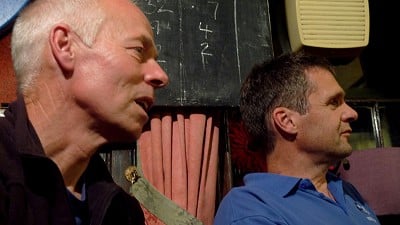

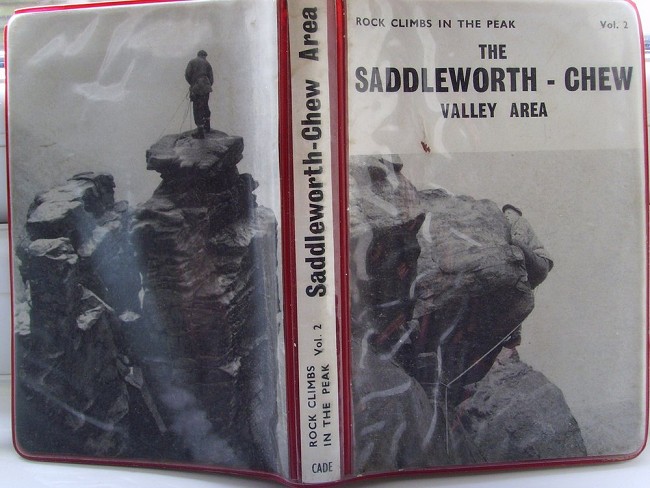

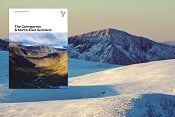
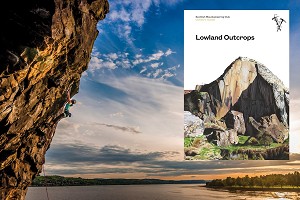
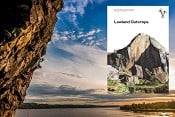


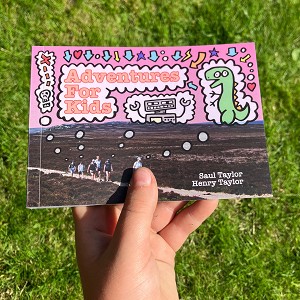
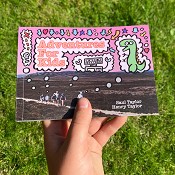
Comments